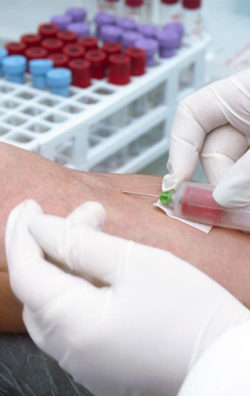
The lipid profile is a group of tests that are often recommended to screen abnormal Lipid level that are circulating freely in the blood. The lipids present in our body are Cholesterol and Triglycerides, also known as Fats. Test of lipid profile can be an indicator for the risk of heart disease, disease of pancreases, metabolic disorder, and other diseases.
The lipid profile typically includes total cholesterol, HDL-cholesterol (often called good cholesterol), LDL-cholesterol (often called bad cholesterol), VLDL, IDL and triglycerides. Sometimes the report will include additional calculated values such as the total cholesterol/HDL ratio.
Screening of lipid profile is recommended for adults over 20 years of age. People less than 20 years of age may be screened if they suffer from risk factors that can raise fat in the body. Monitoring at regular intervals is suggested when a person has risk factors like Diabetes, High blood pressure, Obesity, Premature heart disease or very high cholesterol level in the immediate family, smokers, etc.
Excessive lipids in the blood deposits fat in the lining of blood vessels, that further blocks the flow of blood through the blood vessel and lead to a condition called atherosclerosis. Atherosclerosis can result in a number of complications like heart disease, kidney disease and stroke.
A patient with high lipids does not show any symptoms till he develops complications. Screening and early diagnosis of the condition can ensure early treatment and prevention of the complications.
Frequency of test should be-
For adults: 9 every five years. For youth: once between the ages of 9 and 11 and again between ages 17 and 21. The blood tests should be done after overnight fasting of minimum 8 hours.
Blood is typically drawn from a vein, usually from the inner portion of the elbow or from the back of the hand. The site is cleaned with antiseptic solution that can kill germs. An elastic band is wrapped around the upper arm to make the vein fill with blood. Needle is inserted gently in to the vein. The blood is collected in an airtight vial that comes with a needle. Eventualy, the elastic band is removed from your arm.
Normal Values (mg/dL = milligrams per decilitre)
LDL: 60 to 130 mg/dL
HDL: greater than 40 mg/dL
VLDL: 2 to 38 mg/dL
Total cholesterol: less than 200 mg/dL
Triglycerides: 10 to 150 mg/dL
Cholesterol/HDL ratio: 4.4
Abnormal values may be a sign that you are at increased risk for atherosclerosis and related disorders, including: Heart disease, Kidney disease, Poor blood supply to the legs, Stroke, Abnormal values may also be an indication of thyroid disease, Diabetes, metabolic disorder etc.
Improve your Lipid Profile with proper diet having less fat and regular exercise. Aim to have less than 20 – 30 grams of fat per day and 30 minute of intense exercise.





